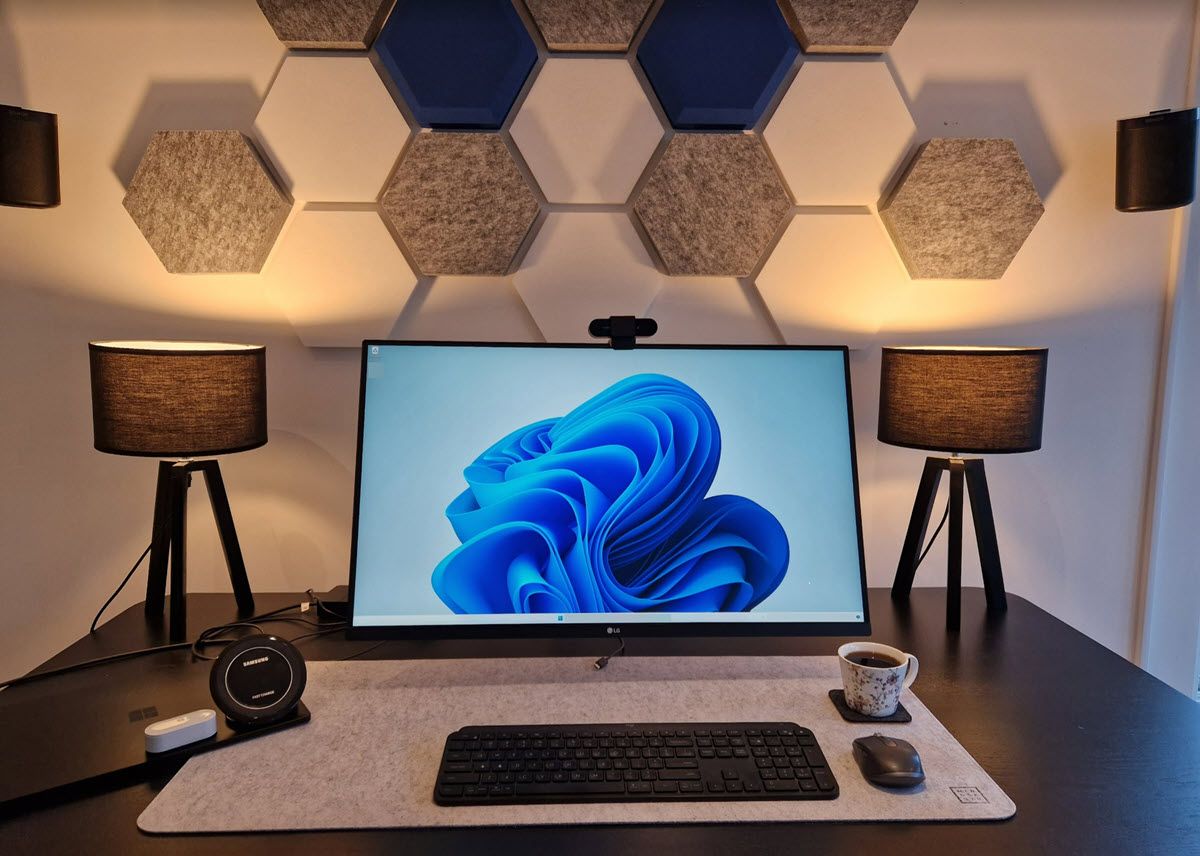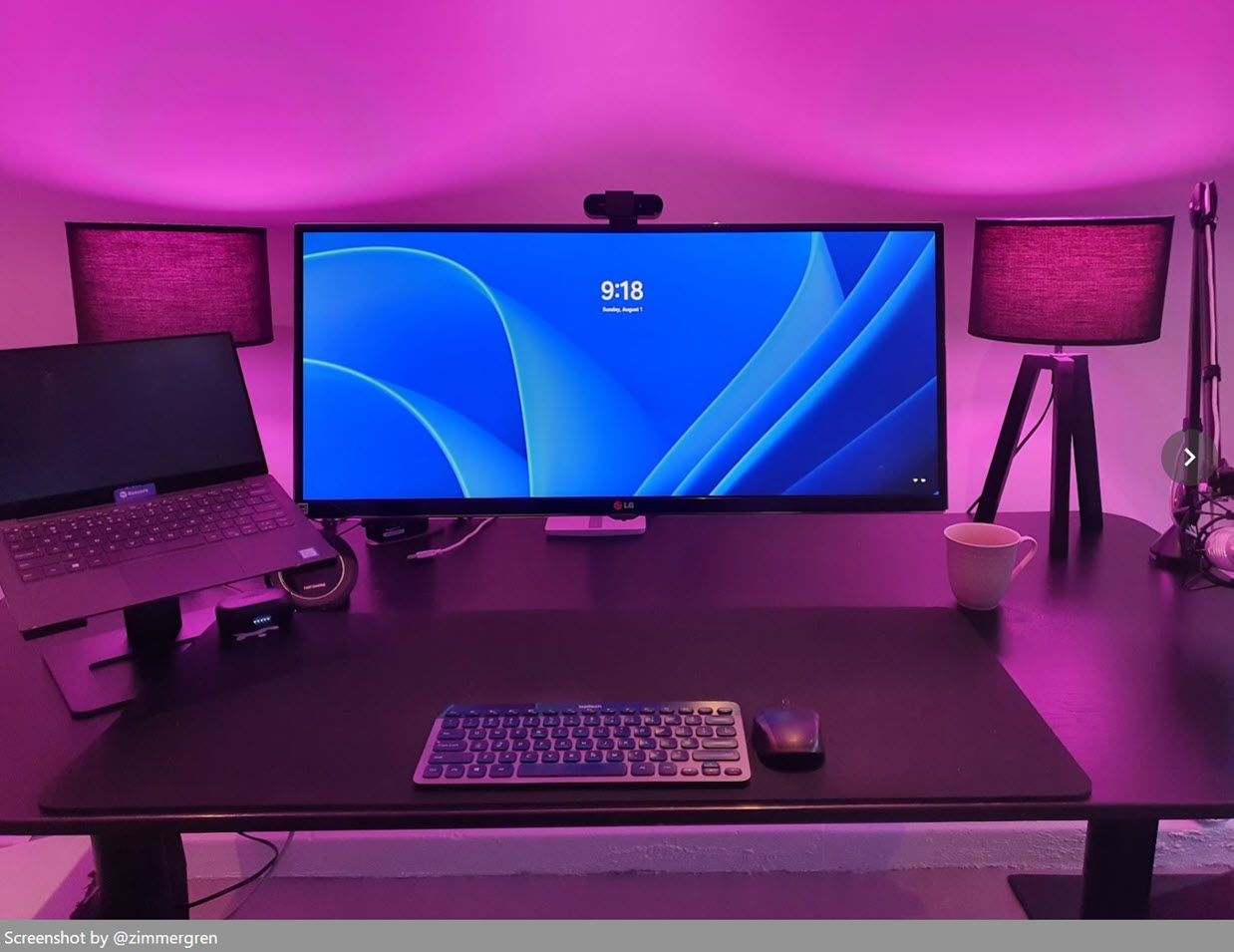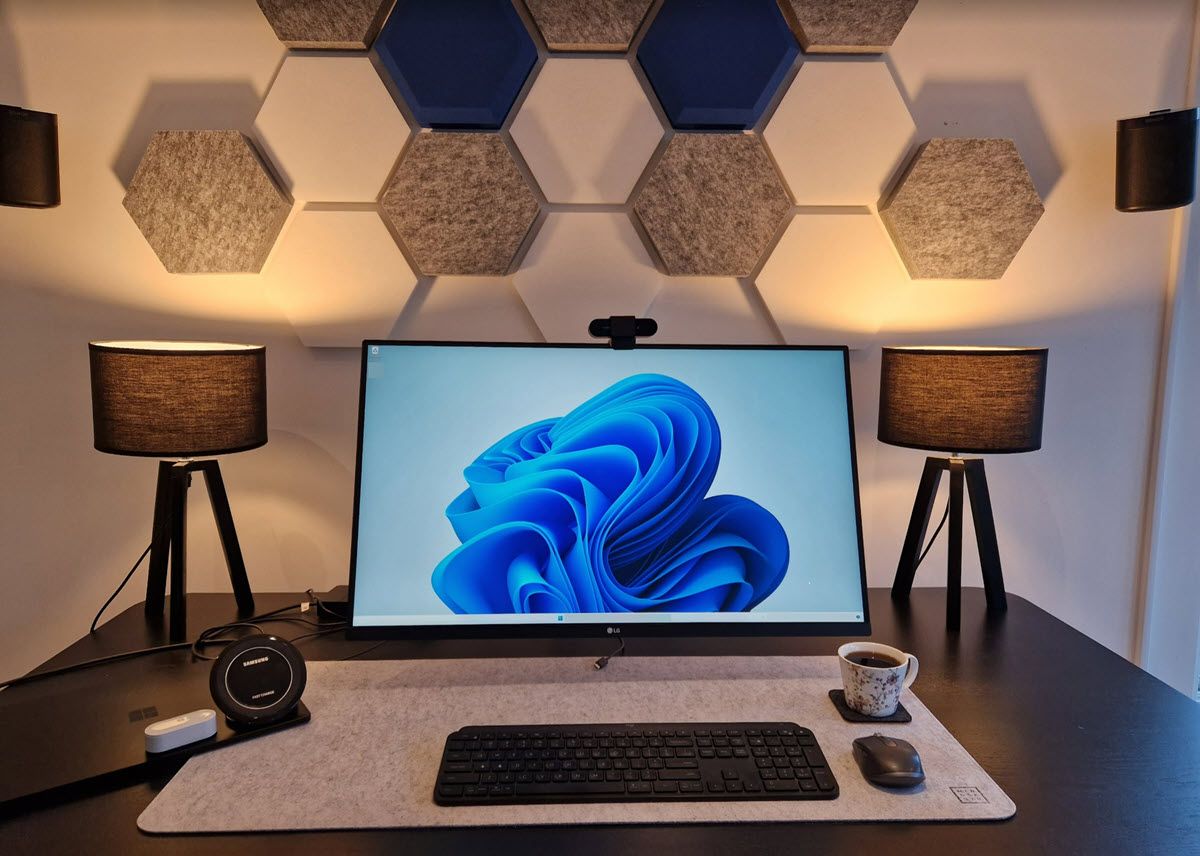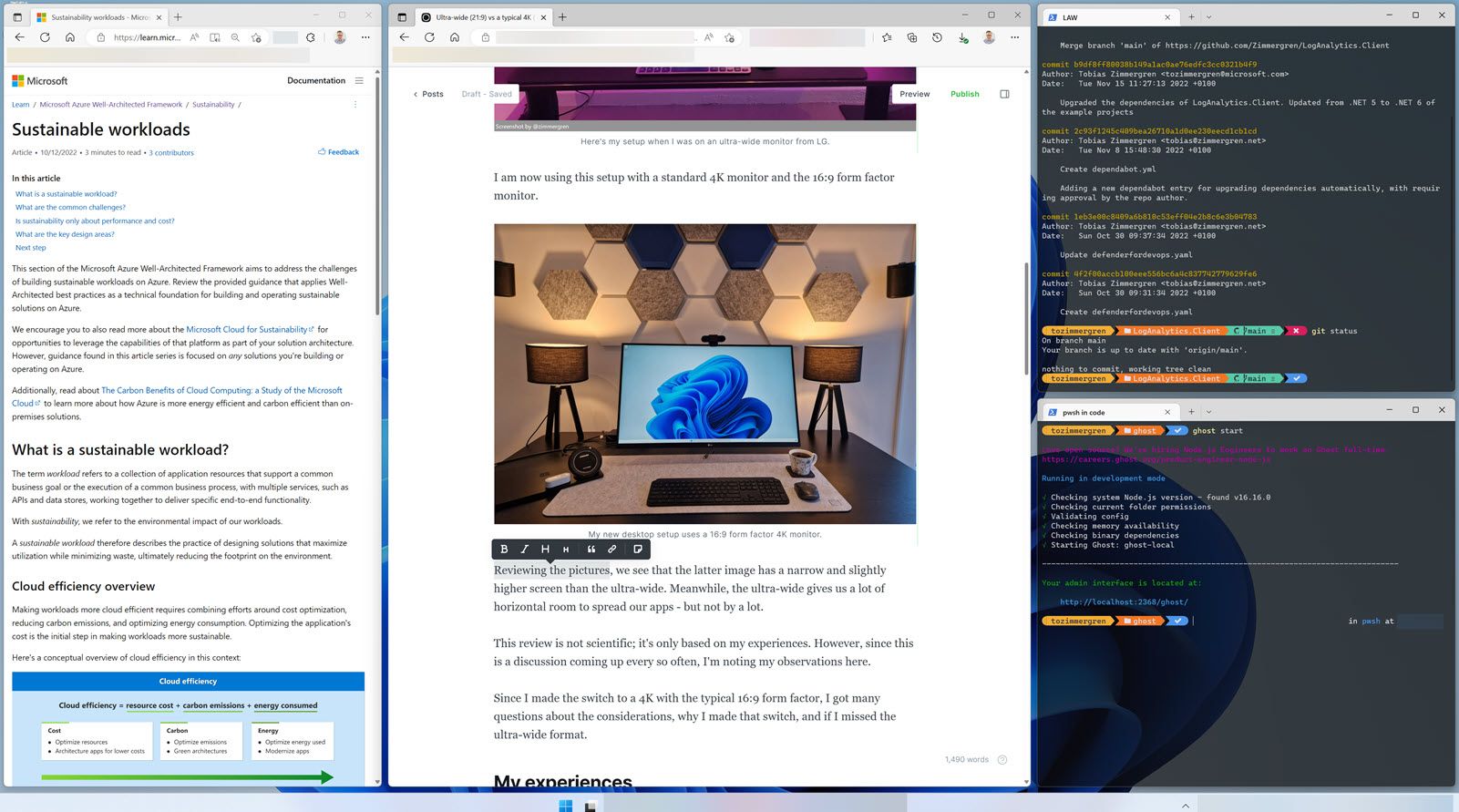
Ultra-wide (21:9) vs a typical 4K (16:9) monitor for productive work
Table of Contents
I have used a 3440x1440 ultra-wide monitor from LG for eight years. I recently needed to try something else, and I "downgraded" to 32", but with 4K, which made all the difference.
To set the scene, I want to clarify my use cases before you continue reading. Here's what I normally spend time on when I'm at the desk:
- Designing cloud architectures
- Detailing security and compliance standards
- Analyzing security events
- Development / Coding
- Writing
- Watching on-demand videos (Pluralsight, LinkedIn Learning, Microsoft Learn, and more)
- Virtual meetings (Attending, presenting, screen sharing)
I don't care much for the specs like refresh rates and response times. It doesn't matter when you work with documents, architectural designs, compliance requirements, security forms, and the like; it's irrelevant for me.
Also, I do not play any video or computer games. If you're looking for a statement on monitors for gamers, you're looking in the wrong place. I can only speak for my productive work setup.
My Setup
Let's set the scene for the scope of this post. I am talking about the monitor types, not a specific brand or model. Additionally, I am not using the built-in monitor stands but an Ergotron LX Desk Monitor Arm. That makes all the difference in the world for positioning my monitor and not being limited to the angles of any built-in monitor stands.
However, this post is not about the monitor stands or my Ergotron arm - it's about my experiences with these types of monitors in general, so let's continue.
Below is a picture of my setup when I used an ultra-wide monitor. It sure looks great on the desk and has several benefits in sleek design.

I am now using this setup with a standard 4K monitor and the 16:9 form factor monitor.

Reviewing the pictures, we see that the latter image has a narrow and slightly higher screen than the ultra-wide. Meanwhile, the ultra-wide gives us a lot of horizontal room to spread our apps - but not by a lot.
This review is not scientific; it's only based on my experiences. However, since this is a discussion coming up every so often, I'm noting my observations here.
Since I made the switch to a 4K with the typical 16:9 form factor, I got many questions about the considerations, why I made that switch, and if I missed the ultra-wide format.
My experiences
After spending considerable time with both form factors, I will try to outline the main pros and cons as per my experiences.
Form factor and resolution
I particularly like the ultrawide form factor because the height isn't as high as the typical 16:9 monitors. However, the difference is relatively minor, mainly because I can move it around using the Ergotron monitor arm.
You get a lot of pixels spread out horizontally. Usually, the ultrawide monitors are 3440x1440, which is pretty poor compared to a 4K monitor in terms of pixels. For me, this was one of the deciding factors.
You can, of course, opt for one of the costly ultrawide monitors that have a better resolution, but they are pricey.
What about the ultrawide hype?
I don't often buy new gadgets or peripherals. I like minimalism in practice and in the mind, and I like things clean and tidy – all at the same time as I'm making a commitment toward a more sustainable future.
Ultrawide monitors are something to like. But, the quality of a 4K monitor just beats any 3440x1440 monitor, and any ultrawide monitor with a higher vertical resolution at this point is way too pricy for the average consumer.
During discussions in the last two years with many who had to start working from home due to the pandemic, it became clear that numerous people developed a "home office anxiety". Perhaps I just made that term up, but the point is that there seemed to be a trend of focusing more on looking great and having an excellent setup than on enabling productive and valuable work. Ultrawide monitors were a big part of the hype – and to be fair, they are amazing. They're just not for me until they are 4K or above in resolution.
Sidenote: I don't play games, so I can't contribute much to the gaming experience with either type of monitor.
Working with others.
I mentioned that I don't play games. Instead, I spend most of my day collaborating with others or working on projects independently.
A portion of collaborating with others is screen sharing and virtual meetings. Using the ultrawide monitor posed challenges more often than not with certain types of sessions.
For example, the ultrawide format was not ideal for:
- Sharing your entire screen.
People with smaller monitors or working from their laptops couldn't see details or the text of my screen share. - Presenting a training, workshop, or any technical session.
Sometimes, you can share a specific window or application or just a PowerPoint presentation. However, sometimes I need to share an entire screen to demonstrate all session components. Therefore, I need to either adjust my view settings and screen resolution or ask if everyone can see everything - which, in most cases, they can't.
If you work more individually and aren't as concerned with sharing your screen and collaborating with others, this could be a non-issue.
How critical is this? Non-critical, of course. But generally, the 16:9 format works a lot better for sharing my screen with others.
Do I need more than one monitor?
For the last eight years, I have used a single monitor. Mostly the ultrawide, and now the 4K monitor. I see no need for additional monitors, as you can perfectly well fit everything on your monitor if you scale things appropriately.
However, now and then, using the laptop as a secondary monitor is helpful when I need to read and write simultaneously or have reference documentation open or when doing presentations and need to keep tabs on something in the backend.
On Windows, I use a scaling of 150%, which works very well. The quality of the 4K monitor heavily outweighs the ultrawide monitor, and with a 150% viewing experience, it looks excellent. You can fit more things if you scale down to 125% or even 100%, but then it's a lot harder to read anything on the screen if it's at a decent distance from your eyes.
With the laptop next to my main monitor, I have no need for an additional monitor for those odd occasions where I feel I need to view something on a different monitor.
To help maintain a good work environment on my screen real estate, I use PowerToys and the FancyZones capabilities to split my screen into multiple virtual monitors or areas. It works wonders, and entirely diminishes the need for that second monitor for me.
I position my windows in various zones depending on the type of work I'm doing, but here's an example just showcasing some of the windows automatically snapping into their zones:

There's nothing important in the screens above, but it should showcase how I mainly use my single monitor. You can, of course, design your zones any way you want.
Verdict for an ultrawide monitor.
To summarize a few thoughts on the ultrawide format, here's a list based on personal experiences.
Pros:
- Massive screen real estate. I can fit almost any application there and have documentation open simultaneously.
- The height is convenient, and I don't need to stretch my neck upwards much.
- A single monitor can act as a dual monitor setup.
Often, I had windows opened side-by-side, and I would work as though I had two monitors. Super convenient.
Cons:
- The pixel density of 3440x1440 is poor and can't even remotely compare to 4K.
- To use the entire screen real-estate, I need to move my head (or body) to the edges to ensure I see everything correctly.
- Sharing the entire screen in a virtual session is less than great for the others in the call unless they are also on giant monitors.
- Slightly pixelated, due to the lower resolution.
Verdict for a typical 4K monitor.
Moving down from 34" to a 32" didn't make any difference here, as the pixel density on the 4K is incredible. I can put more things on the screen with the 4K monitor, even in the 16:9 form factor.
With the 4K resolution, I increased the windows display ratio to 150%, and voila - everything is super clear, and I can't see the pixels on text and fonts, images, and applications. You can see that on the 3440x1440 monitors.
Pros.
- There is no notable difference in my working habits, and I don't miss the ultrawide format. Looking at the picture above, the difference is minimal.
- I can fit more applications and windows on my screen now than on the ultrawide.
- The pixel density is amazing and everything is crystal clear.
Cons.
- I haven't found any formidable cons yet. I truly enjoy this experience.






Recent comments